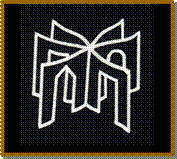Cómo las superheroínas se convirtieron en amas de casa: Pixar y “Los Increíbles” / How superheroines became housewifes: Pixar and “The Incredibles”.
Keywords:
Animación, sexismo, valores, Disney, Pixar / Animation, sexism, values, Pixar.Abstract
Resumen:
Pixar representa para buena parte de su público una renovación de la animación en los términos que nos presentaba Disney tradicionalmente. Sin embargo, bien sea por la dependencia de la multinacional americana, bien sea porque no existe una reflexión en profundidad respecto a la transmisión de valores, Pixar continúa lanzando mensajes conservadores, especialmente, cuando se trata de los roles de mujeres y hombres. En este artículo analizamos algunas de sus películas centrándonos especialmente en Los increíbles que, sin duda, es la que mejor ilustra la difusión de una imagen moderna junto con unos valores conservadores.
Abstract:
Pixar represents for most part of the audiences a renovation in the animation world, especially compared with the traditional treatment of Disney films. However, maybe because it depends economically on this multinational, maybe because there is no a deep thought about the transmission of values, Pixar still shows very conservative messages. Those messages are particularly strong when dealing with men and women roles. In this article we analyze some of Pixar films but we concentrate in The incredibles because it is the best one at presenting a modern idea together with conservative values.
References
Brighon, Rachel. "Deconstructing Disney: Raising our children in cultural politics of racism and sexism", Paper presented at the annual meeting of the 34th Annual National Council for Black Studies, New Orleans, http://www.allacademic.com/meta/p405937_index.html [10-3-2011].
Gillam, K.; Wooden, S. “Post-princess models of gender: The new man in Disney/Pixar”, Journal of Popular Film and Television, 36 (1), 2-8, 2008.
Leahy, S.; Hamilton, M. "Sidekicks and Sexism: Gender in Disney Animated Feature Films", Paper presented at the annual meeting of the The Association for Women in Psychology, San Diego. http://www.allacademic.com/meta/p234987_index.html [10-3-2011].
Martínez Barnuevo, María Luisa. "La animación española de largometraje: pasado, presente y perspectivas de una paradoja", en Revista Latina de Comunicación Social, 64, Universidad de La Laguna, págs. 491-507. http://www.revistalatinacs.org/09/art/41_840_Madrid/65Martinez.html [10-3-2011].
Munson Deats, S.; Tallent Lenker, L. Aging and Identity: A Humanities Perspective, Praeger Publishers, Westport, 1999.
Palacios, José. “Los increíbles una familia de superhéroes”, Fotogramas, 58, Diciembre 2004.
Suardiaz, Delia Esther. El sexismo en la lengua española, Libros Pórtico, Zaragoza, 2002.
Tasker, Yvonne. Spectacular bodies: Gender, Genre and the Action Cinema, London & New York: Routledge/AFL, 2002.
Shepard, Iris. “Representations of Children in the Pixar Films: 1995-2008”, Red Feather: An International Journal of Children's Visual Culture, Spring 2010. www.redfeatherjournal.org (págs. 2-13) [10-3-2011].
Wright, Will, The Wild West: the mythical cowboy and social theory, Sage, London, 2001, págs.154-156.
Downloads
Published
Issue
Section
License

Tejuelo is published with license Creative Commons Reconocimiento-NoComercial-SinObraDerivada 3.0 España.


.jpg)



